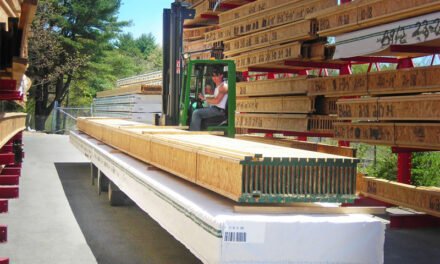North America’s greenest country has a lot to teach us about timber buildings. By Paul Davis
I don’t know if anybody has told them, but all Canadian light switches are upside down. In Australia, you occasionally and inconveniently get an upside-down switch. But how could a whole country get it wrong; it’s almost like they meant it this way. Look, I get that they didn’t have much choice in driving on the wrong side of the road. We can blame the Americans for that who, presumably, started having collisions when they tried to fix their mistakes and just decided to stick to the wrong way for good. I am pretty sure they’re regretful every time they get into a car.
It’s not like Canada has it all wrong; they are definitely more patient and cautious drivers than Australians. Maybe that’s because they are always stressed by being on the wrong side of the road, although, probably, the icy roads mean that the tailgaters and impatient overtakers just remove themselves from the gene pool. The dire state of their roads would also help weed out the weak links: their roads’ standards are like Australia in the 1980s and, mysteriously, line markings on the main Trans Canadian Highway seem to be optional!
One thing that our overseas friends definitely have right is their use of timber in construction. It’s everywhere! Lots of LVL, CLT floors, solid timbers, bearers and joists, OSB – the full set of materials. Whereas in Australia structural steel or concrete are the default materials, in Canada it’s timber. Every public building, every medium-rise accommodation, every shop, every house, every ski resort uses timber. And it all looks wonderful and warm… which is what you need when the temperature outside is cold enough to freeze your nose shut. No exaggeration.
So, how did they get this so right? For the start, a large part of the country is one giant forest with very straight trees. So many trees! Presumably, the relative cost of timber there is significantly less than in Australia. And they don’t have termites, which must be a help. But some of it must be cultural – if pretty much every building is timber, every material supplier stocks engineered timber, every builder is an expert in timber and every engineer is a proficient timber designer, then of course when a client embarks on a new project, timber will be the default material.
I don’t think that Australia could ever get to Canada’s level of enlightenment in the use of timber. However, we shouldn’t accept our status quo, where timber is reserved for domestic housing and a few architectural wonders. There is every possibility that engineered timbers could be used far more widely than now but, given how things move in the Australian industry, that will have to be an evolutionary change rather than a revolution.
I do think that you as fabricators and timber suppliers can have a role in improving the uptake of timber in construction. When you get that commercial job where the engineers have designed the major elements in steel or concrete, discuss substituting engineered timber. Even in domestic housing and unit construction, there is plenty of scope to kick out concrete and steel and bring in timber.
To do that you need to have a toolkit of timber products available to design with, timber engineers you can rely upon, and clients with an open mind – or, more, precisely whose mind you have opened! After all, it’s far better that you take the mark-up on the timbers you supply than the steel fabricator.
As the recent take-up of CLT and glulam has shown, there is an appetite for more timber use in Australia. Our Canadian cousins have shown us the way. We can reciprocate by teaching them to use less food packaging, improve their deeply disturbing toilets (a topic I can’t properly go into in the pages of TTN) and how to make decent coffee!
Paul Davis is an independent structural engineer managing his own consulting firm Project X Solutions Pty Ltd. The views in this column are Paul’s and do not reflect the opinions of Timber Trader News. Phone: 02 4576 1555, email: paul@projectxsolutions.com.au
Image: CLT and glulam star in this Canadian retail outlet. Photo by Paul Davis












